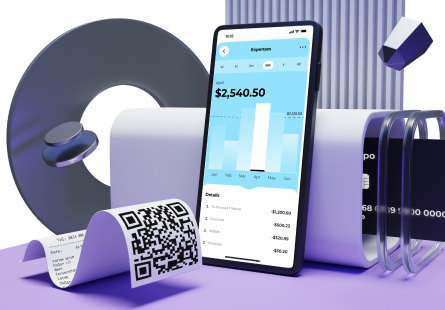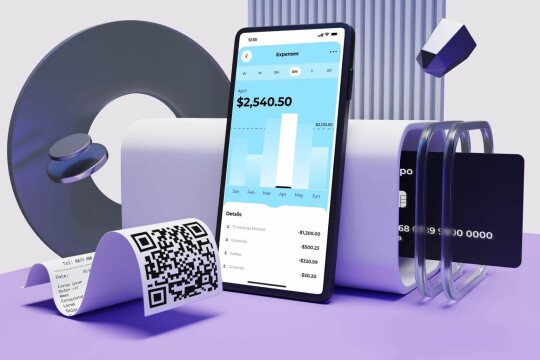Do the security concerns of processing online transactions for your customers keep you up at night? What if there was a solution that could safeguard their sensitive data from cyber threats and data breaches while also making payments more convenient?
Meet payment tokenization, the game-changing technology designed to do just that. By swapping out sensitive payment details with unique tokens, you can keep fraudsters away while ensuring your customers enjoy a smooth and secure payment experience.
Stick around as we uncover the meaning behind payment tokenization, explore how it works, its various use cases, associated benefits, and its promising future.
What is payment tokenization?
In the rapidly evolving landscape of digital transactions, ensuring secure and efficient payment methods is paramount. Payment tokenization has emerged as a groundbreaking solution, providing enhanced security and convenience for both consumers and businesses.
Payment tokenization is the process of replacing sensitive payment information, such as credit card numbers, with a unique, random set of characters called a “token”.
Payment tokenization is a sophisticated method of safeguarding sensitive financial information during digital transactions. Instead of transmitting actual credit or debit card details, a unique identifier or “token” is used to represent the card data. This token is meaningless on its own and cannot be exploited if intercepted by malicious actors. Essentially, payment tokenization acts as a protective shield for sensitive financial data, making transactions more secure.
How does payment tokenization work?
The traditional method of conducting digital transactions involves transmitting and storing credit or debit card details during the payment process. However, this exposes sensitive information to various risks, such as interception by hackers or unauthorized access to databases. Payment tokenization addresses these vulnerabilities by replacing the actual card details with a token, a random and meaningless string of characters. This token is devoid of any intrinsic value and is essentially a surrogate for the real financial data.
The process of payment tokenization typically begins when a user initiates a transaction, whether it be through online shopping, mobile payments, or other digital platforms. Instead of transmitting the actual credit or debit card numbers, the payment system generates a unique token associated with that specific transaction. This token is then used to represent the card information throughout the payment journey.
The creation and management of these tokens are usually handled by specialized entities or token service providers. These entities securely store the original card data in a vault, accessible only through authorized means. The tokens themselves are practically useless for malicious actors even if intercepted, as they lack any direct correlation to the original financial information without the corresponding decryption keys.
Let’s walk through a practical example to understand how payment tokenization works:
1. Initiating the transaction
You decide to buy a new smartphone from an online store. When you proceed to checkout, you enter your credit card details as you normally would.
2. Token generation
Instead of transmitting your actual card details to the online store’s server, a tokenization system comes into play. This system generates a unique token that represents your credit card information for this specific transaction.
3. Token transmission
The token, not your actual credit card details, is sent to the online store’s server for payment processing. This happens securely, often through encryption methods to prevent any interception by malicious actors.
4. Payment authorization
The online store receives the token and forwards it to the payment processor. The processor, which has access to the original card data securely stored in a token vault, verifies the transaction and authorizes the payment.
5. Secure transaction
The transaction is completed without exposing your sensitive card information. Even if a hacker intercepts the token during transmission, it’s useless without the corresponding decryption key held by authorized parties.
6. Token storage
The online store may store the token for future reference, such as for processing refunds or managing subscriptions. Importantly, they never store your actual credit card details, enhancing the overall security of your data.
This example illustrates how payment tokenization protects your sensitive information during an online purchase, making digital transactions more secure and user-friendly.
Benefits of payment tokenization
When it comes to making online transactions safe and hassle-free, payment tokenization steps up to the plate, offering a whole bunch of benefits. Let’s dive into the world of advantages that make payment tokenization a game-changer for digital transactions:
Enhanced security
Payment tokenization significantly improves security by replacing sensitive card details with tokens. Even if a token is intercepted during transmission, it is meaningless without the corresponding decryption key. This minimizes the risk of data breaches and unauthorized access to cardholder information.
Reduced fraud
By using tokens instead of actual card details, payment tokenization reduces the likelihood of fraudulent activities. Since the tokens are randomly generated and lack any inherent value, they provide an additional layer of defense against malicious actors attempting to exploit transaction data.
Global acceptance
Payment tokenization is widely accepted across various payment platforms, making it a versatile and interoperable solution for secure transactions on a global scale. This adaptability ensures that businesses can implement tokenization regardless of their geographical location or the payment methods they accept.
Streamlined compliance
Tokenization aids businesses in adhering to data protection regulations and industry standards. By minimizing the storage and transmission of sensitive information, organizations can simplify compliance efforts, ensuring they meet legal requirements and maintain the trust of their customers.
User convenience
For consumers, payment tokenization translates into a seamless and convenient payment experience. Whether making online purchases, using mobile wallets, or engaging in contactless transactions, the process becomes faster and more user-friendly without compromising security.
Risk mitigation for merchants
Merchants benefit from payment tokenization as it reduces the risks associated with storing and processing sensitive payment information. This can lead to decreased liabilities in the event of a security breach, as the stored tokens are of minimal value to potential attackers.
Support for various payment scenarios
Payment tokenization is versatile and applicable across a range of payment scenarios, including e-commerce transactions, mobile payments, contactless transactions, recurring payments, and in-app purchases. Its adaptability makes it a practical solution for diverse business models.
Improved authorization rates
Tokenization can enhance authorization rates for transactions. With the secure transmission of tokens and reduced risk of fraud, payment processors may be more likely to approve transactions, leading to a smoother payment experience for both consumers and businesses.
Tokenization in the cloud
Cloud-based tokenization services offer scalability and flexibility. Businesses can leverage these services to tokenize payments without the need for extensive on-premises infrastructure, simplifying implementation and maintenance.
Future-ready technology
Payment tokenization is positioned to evolve with emerging technologies. Integrations with blockchain, artificial intelligence, and biometrics hold the potential to further enhance security measures, paving the way for a future where transactions are not only secure but also more intelligent and user-centric.
In summary, payment tokenization delivers a comprehensive set of benefits, ranging from bolstered security and fraud prevention to enhanced user experiences and global acceptance. As digital transactions continue to evolve, payment tokenization remains a fundamental element in shaping a secure and efficient payment landscape.

Payment tokenization use-cases
Today, payment data tokenization is used everywhere. It provides significant benefits for businesses dealing with sensitive payment data across different sectors. Let’s explore some real-life use-cases with examples from global companies:
E-commerce transactions
Example: Amazon
In e-commerce, payment tokenization secures online transactions, allowing customers to make purchases without exposing their actual card details. Amazon, a global e-commerce giant, employs tokenization to enhance the security of its vast array of transactions, ensuring a safe shopping experience for millions of users worldwide.
Mobile wallets
Example: Apple Pay
Mobile wallets leverage payment tokenization to facilitate secure transactions using smartphones. Apple Pay, for instance, uses tokens to replace card details, enabling users to make contactless payments with their iPhones. This adds an extra layer of security and convenience for Apple Pay users globally.
Contactless payments
Example: Google Pay
Payment tokenization is crucial in the world of contactless payments. Google Pay utilizes tokens to secure transactions when users tap their smartphones at payment terminals. This technology ensures that the actual card information remains protected, contributing to the widespread adoption of contactless payments.
Recurring payments
Example: Netflix
Subscription-based services often employ payment tokenization for recurring payments. Netflix, a leading streaming service, uses tokenization to securely charge subscribers on a regular basis without storing their sensitive financial details. This ensures a seamless and secure subscription experience for users.
In-app purchases
Example: Airbnb
Applications offering in-app purchases, such as those in the hospitality industry, utilize payment tokenization. Airbnb, a global platform for booking accommodations, employs tokenization to secure transactions within its app, enhancing the overall safety of financial information for both hosts and guests.
Online marketplaces
Example: eBay
Online marketplaces handle a multitude of transactions daily. eBay, a prominent online marketplace, implements payment tokenization to protect users during transactions. This secures the exchange of goods and services between buyers and sellers, contributing to a trustworthy marketplace environment.
Cross-border transactions
Example: PayPal
Payment tokenization plays a vital role in cross-border transactions. PayPal, a widely used online payment system, employs tokenization to secure transactions globally. This ensures that users can make secure payments and transfers across borders without compromising sensitive financial information.
Healthcare payments
Example: Athenahealth
In the healthcare sector, where secure payment processing is crucial, companies like Athenahealth use payment tokenization. This ensures that patient payment information is protected during transactions, maintaining the confidentiality and integrity of sensitive healthcare data.
Transportation services
Example: Uber
Ride-sharing platforms like Uber utilize payment tokenization to secure transactions for rides and other services. By implementing tokenization, Uber ensures that user payment details are protected, contributing to the trust users place in the platform for secure and convenient transportation.
Digital wallets
Example: PayPal
Digital wallets like PayPal leverage payment tokenization to enhance the security of transactions. By replacing actual card details with tokens, PayPal ensures that users can make online payments securely, whether they’re shopping, sending money to friends, or conducting business transactions.
These real-life examples demonstrate the versatility and effectiveness of payment tokenization across various industries, showcasing how it enhances security and trust in digital transactions for both businesses and consumers.
The future of payment tokenization
As we look ahead, payment tokenization emerges as a transformative force, reaching beyond the current landscape to redefine the future of digital transactions. Several key trends and developments paint a compelling picture of what lies ahead.
The integration with emerging technologies is a defining feature. Payment tokenization is set to seamlessly merge with cutting-edge technologies like blockchain, artificial intelligence (AI), and biometrics. This fusion promises heightened security measures and an enhanced authentication process, with blockchain potentially introducing decentralized tokenization systems.
Another promising aspect is the integration of payment tokenization with biometric authentication. By incorporating biometric data, such as fingerprints or facial recognition, alongside tokenization, a more robust and personalized security framework emerges. This convergence not only elevates security but also offers a user-friendly and frictionless payment experience.
Smart contracts, often associated with blockchain technology, hold significant potential for enhancing the functionality of payment tokenization. These self-executing agreements based on predefined conditions streamline complex transactions, automate processes, and open doors to secure, programmable payments.
Artificial intelligence (AI) is anticipated to play an increasingly significant role in securing transactions. AI algorithms, continuously analyzing transaction patterns and detecting anomalies, could synergize with payment tokenization to create a dynamic defence against evolving cyber threats.
Collaboration across industries is another defining trend that may shape the future of payment tokenization. Fintech companies, traditional financial institutions, and tech innovators might join forces to establish standardized tokenization frameworks, fostering interoperability and ensuring a seamless, secure payment experience across platforms and services.
As payment tokenization becomes more ingrained in the financial landscape, regulatory frameworks are likely to evolve. Governments and regulatory bodies may work towards standardized guidelines for implementing and overseeing tokenization systems, fostering a secure and compliant environment for digital transactions.
The scope of payment tokenization may transcend traditional financial transactions, reaching sectors like healthcare, identity verification, and the Internet of Things (IoT). Leveraging tokenization could secure sensitive data in various domains, underscoring the versatility and adaptability of these technologies.
In the evolving landscape, user education and acceptance will be pivotal. As consumers become more aware of the benefits and security features of tokenization, widespread acceptance is likely. This shift in perception is crucial for the continued adoption and success of tokenization in the digital payments landscape.
In summary, the future of payment tokenization is marked by integration with cutting-edge technologies, expanded use-cases, and a concerted effort to create a secure, standardized, and user-friendly digital payments environment. As technology continues to evolve, payment tokenization is poised to play an increasingly pivotal role in shaping the way we conduct transactions in the digital age.
Final thoughts
Payment tokenization stands at the forefront of secure digital transactions, providing a robust defence against the ever-growing threats in the online payment landscape. With its widespread adoption and numerous benefits, payment tokenization is not merely a trend but a fundamental shift towards a more secure and convenient future in the world of finance.
As technology continues to advance, the future of payment tokenization looks promising. With the rise of blockchain technology, there is potential for even more secure and decentralized tokenization systems. Additionally, increased integration with emerging technologies like artificial intelligence and biometrics could further enhance the authentication process, making transactions more secure and user-friendly.







